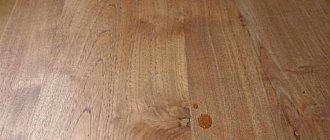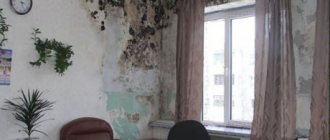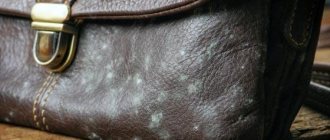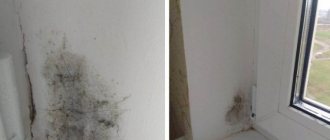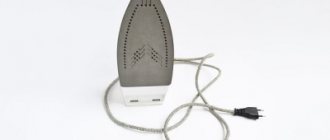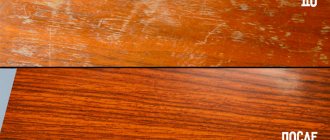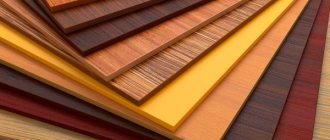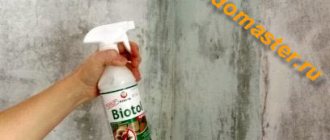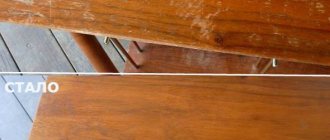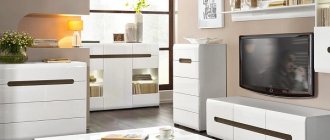Mold is a real problem, threatening not only the appearance of the furniture, but also the health of the residents themselves. The reasons for the appearance of this substance may be hidden in technological flaws in the furniture and the presence of mold spores in the apartment.
There are effective folk remedies that will help treat mold on furniture. However, dry cleaning provided by professionals will be the most effective.
Why should you be afraid of mold?
Mold is a special type of fungus that reproduces using small spores that are invisible to the naked eye. As scary as it sounds, every person has similar microparticles of mold in their home. However, their number is often negligible and they cannot continue their development, especially when there are no suitable conditions.
At the moment, there are several different types of mold, but the most common in the apartment remain:
- Black mold. The most frequent guest of the bathroom, walls, ceiling and wallpaper. When characteristic dark spots appear on these surfaces, the first thing you need to think about is a fungal infection.
- Blue mold. Relevant when it comes to wooden objects, floors or other parts of the apartment. It affects structures made of boards and the like.
- White mold. Occurs on flowerpots after too intense watering.
There are other types of fungus, however, they are much less common in a person’s home and pose virtually no threat.
As for black mold, it remains quite dangerous. An apartment in which the growth of such “thickets” progresses automatically turns into a breeding ground for allergens.
The main threat posed by such a fungal infection at home remains spores. These microparticles of mold can cause powerful allergic reactions leading to serious health problems.
Regular stay in a house with fungus is fraught with the progression of pulmonary diseases, the most dangerous of which remains bronchial asthma. Against this background, it develops especially often in young children, whose respiratory system is not yet fully formed.
One way or another, the fact remains obvious that when the slightest speck of mold appears on any part of the house, be it a wall or the surface of a sofa, you immediately need to start fighting it. Otherwise, residents will experience progressive deterioration in their health with the development of serious diseases.
Preparation
Wear long sleeves, old pants or trousers, and cover your hands with gloves. If you have safety glasses or a mask, be sure to wear them to avoid inhaling mold spores. It is very dangerous. You can also use a respirator.
Many people have these means of protection because the coronavirus pandemic is not over yet. Furniture affected by mold should be taken outside into the sun. Direct sunlight has a detrimental effect on mold and prevents its spread.
Now you need to sweep away the top layer of mold with a broom or broom. Remove all stains visible to the naked eye. Try not to touch clean areas of furniture, because you may accidentally introduce spores there too.
Why does mold appear in an apartment?
To answer the question: “How to deal with mold in an apartment?”, you need to understand why it appears in the first place. It is a well-known fact that fungus loves damp and poorly ventilated spaces. Therefore, in areas of the home where there is a regular accumulation of excess liquid and insufficient ventilation, it will certainly begin to grow.
The main reason for the appearance of mold in an apartment is poor ventilation
The reasons for this situation may be:
- Freezing of walls with moisture retention in the brickwork.
- Leaking water pipe in the wall.
- Problem with the roof (relevant for owners of private houses and apartments on the top floors).
- General poor waterproofing of the room.
- Lack of heating.
- Plumbing breakdowns.
All these factors can lead to the progression of fungus in an apartment or house.
If we talk separately about mold on furniture, then the wood from which it is made can be infected with spores and through no fault of the owner.
The most common causes of fungal growth on fittings are the following:
- Violations of production technology. In theory, all wood that is used to make furniture is pre-treated with special solutions and antiseptics to reduce the risk of fungal growth to zero. If this stage was ignored, and mold spores were introduced into the structure before its implementation, then the owners will very soon be looking for a good remedy for mold on wood.
- Introducing spores from outbreaks in the apartment. If there are areas of fungal infection in the room, it can spread to furniture surfaces that have not been properly treated.
- Constant exposure to moisture. If water regularly gets on the fittings, it quickly begins to deteriorate, and mold can begin to grow progressively.
Knowing why a fungal infection occurs, it is much easier to fight it. To effectively overcome the problem, it is necessary to exclude the influence of the above factors.
Prevention of occurrence
It is much easier to prevent a mold problem than to spend a long time trying to get rid of it. Among the most common preventive measures, several are worth noting:
An antimicrobial spray will help prevent fungal growths.
An alternative is to purchase anti-mold paint.- Shower curtains and towels should be carefully straightened after use.
- Problems with leaking plumbing should be addressed immediately. To prevent moisture from accumulating in cracks under the floor.
How to get rid of mold in an apartment for sure?
So, we managed to figure out the main reasons for the spread of the problem. Now it’s a matter of choosing a method to eliminate it. It is important to first assess the extent of the damage. If mold covers small localized areas somewhere on the wall or in a corner under the ceiling, then any home owner can easily cope with this task.
Is it possible to get rid of mold forever?
However, when we are talking about the extensive spread of “thickets” over the surface of the entire wall, involving a large amount of furniture in the process, it is often necessary to turn to specialized teams for help.
However, in the fight against mold, a certain sequence of measures must be followed.
Conventionally, we can distinguish three stages of such cleaning of an apartment or house:
- Elimination of the cause of the fungus. If the problem is in the pipes, you should call a plumber. When the roof leaks, contact the appropriate utility services and the like. The main thing is to eliminate the influence of high humidity and insufficient air circulation.
- Actually mechanical and chemical cleaning of the premises. A set of methods aimed at completely destroying the area affected by the fungus.
- Preventive measures that will prevent the recurrence of mold on furniture, walls and the like.
If everything is clear about the question of eliminating factors leading to the progression of fungal growth, then you need to get acquainted with the methods of getting rid of “thickets” in more detail, especially when it comes to wooden surfaces and furniture.
Causes of wood damage
The lightest mold spores are always present in the air, but they can infect wood and grow into a colony only in favorable (for them) conditions.
Fact! Microscopic spores are carried by the wind, transported on animal fur or on shoes. When the spores find themselves in a comfortable environment, mycelium - a mold colony - will begin to develop from them. Air humidity above 70% and temperature 5–30°C are ideal for mold growth.
These conditions - plenty of moisture and weak air movement - depend on each other. If there is poor ventilation in a wooden house or bathhouse, it is usually accompanied by high humidity.
The development of mold is also promoted by uneven distribution of heat in the home (cold corners), as well as construction problems (improper thermal or waterproofing, lack of antifungal treatment of building materials, etc.). An important factor will be the lack of natural light (for example, in the basement): all mushrooms, including microscopic ones, love the dark.
The development of mold colonies is manifested by darkening of the wood and pockets of bizarre contours of light purple, pink, and brown colors (depending on the type of mold).
- The so-called blue does not penetrate deep into the wood substrate and does not destroy it, but bluish spots quickly expand in size and disrupt the aesthetics of wooden walls or ceilings.
- Black mold prefers stone or tile in the bathroom, but is rarely found on wood.
- The most dangerous type of fungus that settles on wood is brown mold. It destroys wood fibers and quickly penetrates deep into the material. Bright brown spots spread on the walls or floor, and after a few months the interior decoration becomes unusable.
More often, mold develops in cellars and basements of country houses, where people do not live in winter and, therefore, do not heat them. Loves mold and wooden baths with poor ventilation. In city apartments, mold can attack and completely ruin the wooden cladding of the balcony.
How to destroy mold on furniture?
If a fungal infection first appears on the walls of a room, then there is a high chance that it will soon spread to the fittings. How to get rid of mold on furniture? This is what interests many owners of wooden interior elements.
Thorough cleaning and treatment of furniture with special products will help get rid of fungus
It’s worth starting with the fact that the main idea of such a fight is, first of all, to eliminate high humidity and lack of ventilation in the room. In the process of plastering and puttying work in a house or apartment, one must not forget about waterproofing the room.
For this, a special primer against mold and mildew is additionally used. It already contains a ready-made antiseptic and fungicide that prevents the progression of the growth of new colonies.
Then it's up to specialized tools. At the moment, there are quite a large number of ready-made factory-made antiseptics for wood processing. However, it is often enough to use folk remedies that people used to save themselves for centuries before the advent of powerful modern drugs.
Ways and means of getting rid of mold stains
It is easy to expel mold from a tree only if the colony is just beginning to develop. When it penetrates far into the depths, it is already useless to get rid of mold stains on the surface.
It is necessary to remove mold in two steps (they can be performed in any order, the main thing is not to allow a long time gap between them):
- find and eliminate the cause of the fungus in the house;
- clean the mold directly.
Dry and ventilate
The first step is to increase the air temperature in a wooden house and dry it out. The room thermometer should show at least 18°C, and the air humidity should be lowered to 60 percent or lower. If high humidity is observed in the basement or attic, you need to check the condition of the roof and the integrity of the foundation, and plan proper waterproofing.
The issue of effective air circulation is very important. It is necessary to consider the ventilation system: in the case of plastic windows, ensure the flow of outside air through ventilation ducts; install forced ventilation in the bathroom or bathhouse.
Heat flows into the home are assessed. If necessary, radiators are moved or electric heating devices are installed to eliminate cold corners and other places where condensation and mold can form.
Effective folk methods of fighting fungus
At a time when people did not have access to today’s fashionable products, they used improvised and industrial liquids.
The most popular and truly effective remain:
- Ordinary table vinegar. To achieve the desired effect, you need to moisten the wooden surface with it. Next, use a metal or stiff brush to treat the affected area. Wash away any remaining contaminated wood. Re-treat the area with a spray bottle. Let dry (about an hour) and wipe again. In this simple way you can thoroughly clean almost any furniture.
- Hydrogen peroxide. Another simple and reliable home method for removing mold. It is necessary to apply a 3% solution of the drug to the affected area of the tree. Leave it for 10 minutes to absorb. Then use a brush to clean the “disaster” area. Wipe with a damp cloth and then with a dry cloth for final cleaning.
- Baking soda. The peculiarity of its effect remains the ability to absorb the smell of mold. This is especially useful when it comes to combating mold on your sofa or bed. To achieve the desired result, you need to moisten a rag in water and apply a little soda to it. Next, thoroughly wipe the affected area of the tree. Then rinse everything off and dry.
- Tea tree oil. A rather original method for cleaning furniture from mold. It has a powerful but gentle effect. In addition, it does not require a lot of the corresponding product to achieve the effect. For 1 liter of water you need 1 teaspoon of oil. This mixture is poured into a spray bottle, sprayed over the surface, cleaned with a stiff brush and wiped dry.
Another good remedy that will help solve the problem of how to remove mold from wooden surfaces is creosote. This is a specific yellowish oily liquid that is used to treat ship sleepers.
It is rarely used at home, however, it is perfect for cleaning technical or utility rooms. Due to its pungent odor and toxicity, working with it should only be done in a respirator and rubber gloves.
It is enough to first mechanically clean the wood and apply several layers of creosote. They cannot treat furniture with it.
Removing mold from wood
From time to time, mold forms on the surfaces of wooden products. It spoils the appearance, annoys with an unpleasant odor and can quickly spread to unaffected surfaces. However, unlike rot, mold practically does not destroy the tree. To prevent its occurrence, it is enough to eliminate the conditions for this. Removing mold from wood
easy to produce with improvised means.
Chemical antiseptics to rid an apartment of mold
In addition to proven folk remedies, the modern building materials market offers its consumers a huge selection of affordable and high-quality factory-made fungicides that do an excellent job of killing fungus and mold on almost any surface and material, including wood.
The following remain the most popular:
- Alpa "Fongifluid" . One of the most universal antiseptics, which has a wide spectrum of action against bacteria, mold and mosses of various types. Ideal for processing stone and wooden surfaces. Available in convenient packaging and remains affordable.
- OLYMP Stop-Mold . Another option for a high-quality fungicide that works great against mold. Suitable for processing wood, as well as regular walls or even wallpaper (can be added to the appropriate adhesive). Available in 5 liter containers. Remains safe for humans.
- An excellent spray with a powerful fungicidal effect. Thanks to its convenient spray nozzle, it is ideal for treating furniture and small wooden surfaces.
The above products must be used according to the instructions for antiseptics. Basically, it does not involve anything complicated, however, sometimes it is worth consulting first with the salesperson in the store.
Cleaning technology
Now you need a mild detergent that produces a lot of foam. It doesn't matter whether it's regular soap or a special product. Make a foam, using a soft cloth, simply rub it into the upholstery and leave in the sun for a couple of hours.
As a means of reconciliation with her daughter, Maksakova asked her to learn to forgive
It is calculated: Russians’ salaries in January decreased by 29% compared to December
Poems-pies from Vladimir Ivanov can lift your spirits and more
Then rinse the problem area with clean water several times. Dry thoroughly. If mold remains and you smell it unpleasantly, use alcohol. Dilute a couple of teaspoons in half a liter of clean water and rinse the stains again. Alcohol gives off an unpleasant odor, so if you don't like it, mix equal parts water and white vinegar.
Wet the upholstery again, rub lightly and leave to dry. After cleaning the furniture, be sure to treat all the items you used with the same solution and leave them in the sun for at least three hours, remembering to turn them over if necessary.
Precautionary measures
Most of the above remedies and professional preparations remain safe for humans. In any case, this does not mean that you can ignore basic safety rules. You should always wear a respirator and rubber gloves. Whether it's simple vinegar or a serious chemical, it never hurts to be extra careful.
It is also worth remembering that the treatment of the room or furniture must be carried out in a well-ventilated area to speed up the drying of the solutions. Accordingly, at the time of cleaning the room or its interior, no strangers should be in it to prevent exposure to appropriate anti-fungal agents.
The fact remains obvious that it is quite possible to eliminate mold in an apartment or on furniture on your own. The main thing is to choose the most optimal product and use it according to the instructions. Fungal infection should be identified as quickly as possible. Timely destruction of dark “thickets” remains the key to the health of the residents of a house or apartment.
The smell from the old sofa
Assistant number one is acetic acid. We dilute the product with water at the rate of 2 tbsp/1 l. This composition is suitable for removing almost any unpleasant odor from the sofa. Using the resulting solution, we wet the furniture on all sides and let the composition dry completely. A substitute for acid can be lemon juice, hydrogen peroxide or a weak solution of manganese.
See also: What can you do to get rid of mold smell?
Aromatic salt, which can be replaced by simple table salt, is another excellent remedy against this ailment. We pour it on the upholstery of the sofa. Leave for ten hours and then remove the salt (with a brush or car vacuum cleaner). Salt can be replaced with potato starch.
To combat the unpleasant odors that your old sofa has absorbed, green tea bags are also suitable. The application pattern is simple - lay them out on the sofa and leave them for several days.
What you should know
When choosing a method for cleaning fabric or upholstery, always carefully and correctly select the products, taking into account both the structure of the fabric and its type and color. For example, a method using highly toxic specialized professional products or simple bleach is absolutely not suitable for colored items. We risk simply losing the item, even if we get rid of mold. Also, when cleaning colored items or fabrics, you should be especially careful when using a solution of soda or vinegar. For silk and wool, the ideal method of cleaning with soda, described earlier. For linen and cotton items, bleach is suitable (unless, of course, the items are colored).
Baking soda is effective against mold
For colored fabrics there is another good way: you will need alcohol (about 70%), with which we will treat the affected area. In addition, you will need baby talc and a sheet of thick paper. Having sprinkled the affected area with talcum powder after treatment with alcohol, apply our paper sheet and iron it on top with a hot iron without steam for five or ten minutes.
Why do boards, beams, logs and lumber turn black?
Wood is the best natural and environmentally friendly material for building your own home. Yes, this is true, because in addition to its aesthetic qualities, a wooden house is warm, safe for the health of the people living in it, and does not cause allergies. In addition, it is always comfortable in a wooden house.
In summer there is a gentle coolness, in winter it is moderately warm, and the humidity level is always normal. As you can see, wood has many properties that can easily outperform any building material.
Unfortunately, just like any coin has two sides, wood, if stored and used improperly, may develop shortcomings that make it unsuitable for construction.
What can happen?
Often, in some areas of the tree you can find blue, white and black shades of color. Typically, this is nothing more than the result of fungal organisms that feed on wood cells, leaving behind a dark color pigment. Despite the fact that the dark pigment in the wood structure is not rot, such a piece will never pass the sorting process. Usually, the infected area is removed, and the remaining parts are used for their intended purpose.
Boards, logs and beams, as well as other lumber, turn black during storage. The reason for this may be insufficient control when the wood stored in the warehouse is either lying incorrectly or is not completely dried at the processing stage. The dangerous thing here is that mushrooms can penetrate into the pores, cracks, and jagged edges of wood, and be stored there for a long time in a state of suspended animation.
Then, when the building material has been used for its intended purpose, the spores “wake up” and begin to destroy the structure of the wood, leading to rot and the formation of a dark shade of color. As a rule, this is caused by a sharp increase in air humidity. Most often, wooden houses located near bodies of water suffer from this problem, where antiseptics are indispensable.
What fungi are the most dangerous for wood? Expert opinion
Untreated wood will always be attacked by fungi. These pests not only worsen the appearance of the material, but also negatively affect its structure, reducing its strength and destroying the entire wooden structure. The fungus also greatly affects the health of residents; problems with the respiratory system may arise, allergic diseases, etc. There are quite a few types of fungi, and every owner of a log house should know which of them are the most dangerous for wood.
Fungi
Fungi reproduce by spores; many wooden materials become infected with them while still in the forest. For further development and growth of fungi, high humidity of the air or the material itself and also heat are required. Once these conditions are created, fungal growth can be detected on the wood material. Their appearance may be indicated by the presence of blue, white, black and other shades of spots. There are many varieties of fungi, but 4 types can be considered the most common.
Types of fungi dangerous to wood
- Blue fungi. Under their influence, the tree acquires a gray-blue tint. These mushrooms are capable of destroying the existing layer of varnish or paint, thereby opening up the access of moisture to the wooden material. The fungus itself will not harm the strength characteristics of the material. But its appearance indicates that the wood needs protection.
- White and black mold. These fungi can appear not only on wood, but also on other materials (stone, tiles, concrete, etc.). They act destructively on the very structure of the building and have a negative impact on people’s health. Their spores in the air settle on a person’s skin, penetrate his respiratory tract, all this leads to allergic diseases and serious problems with the respiratory system (laryngitis, bronchitis, asthma, etc. can form).
- Rotting fungus. It can be dry or wet. Wet fungus forms on damp wood material. It is often found on wood located near the ground, water pipes, or on the floor. Dry rotting fungus also forms in damp places. This fungus appears in the form of reddish spores. They penetrate deep into the wood structure and begin to destroy it.
- White, house mushroom. It grows rapidly and in a short time completely destroys the wooden building. The spores of this fungus are spread by the wind. This fungus is “tenacious” and is not easy to eliminate on already infected wood. House fungi themselves are capable of producing moisture for their own development and attacking already dry wood. That is why houses infected with this type of fungus were previously burned down, so as not to infect other healthy structures. Home mushroom is considered the most dangerous species for wooden material. It occurs primarily on softwoods, but can also develop on other materials containing cellulose. The house fungus is not capable of affecting only durable oak.
All types of fungus are dangerous to wood and human health. To prevent them from appearing in a wooden building, you need to properly organize heating, waterproof the walls and foundation, and also ensure good ventilation of the room. And for preventative purposes, it is also necessary to treat wooden material with antiseptic impregnations.
What to do about this trouble?
To avoid blackening of wood, you should take a more careful approach to the choice of building material, the time of its preparation, as well as the technological process. You should not cut down trees that are located near swamps and ponds. In addition, it is best to harvest timber in winter. It is during this period of time that all life processes in the tree stop. It has been scientifically proven that a tree cut down in winter best retains its thermal insulation qualities. In addition, it is guaranteed to be free of microorganisms that cause blackness and rapid rot.
If this could not be done on time, then you should turn to such unique products - wood bleaches “BioShchit-1” and “BioShchit-2”, which will help you fight the blackening of boards, lumber, logs and various timber.
Wood bleach "BioShield-2" can combat strong blackening (blackness) on lumber wood.
Wood bleach "BioShield-1" can combat less severe blackening (blackness) on the wood of lumber, logs and timber.
- Blue fungi. Under their influence, the tree acquires a gray-blue tint. These mushrooms are capable of destroying the existing layer of varnish or paint, thereby opening up the access of moisture to the wooden material. The fungus itself will not harm the strength characteristics of the material. But its appearance indicates that the wood needs protection.
- White and black mold. These fungi can appear not only on wood, but also on other materials (stone, tiles, concrete, etc.). They act destructively on the very structure of the building and have a negative impact on people’s health. Their spores in the air settle on a person’s skin, penetrate his respiratory tract, all this leads to allergic diseases and serious problems with the respiratory system (laryngitis, bronchitis, asthma, etc. can form).
- Rotting fungus. It can be dry or wet. Wet fungus forms on damp wood material. It is often found on wood located near the ground, water pipes, or on the floor. Dry rotting fungus also forms in damp places. This fungus appears in the form of reddish spores. They penetrate deep into the wood structure and begin to destroy it.
- White, house mushroom. It grows rapidly and in a short time completely destroys the wooden building. The spores of this fungus are spread by the wind. This fungus is “tenacious” and is not easy to eliminate on already infected wood. House fungi themselves are capable of producing moisture for their own development and attacking already dry wood. That is why houses infected with this type of fungus were previously burned down, so as not to infect other healthy structures. Home mushroom is considered the most dangerous species for wooden material. It occurs primarily on softwoods, but can also develop on other materials containing cellulose. The house fungus is not capable of affecting only durable oak.
Why is black fungus dangerous and how to prevent it from appearing?
One of the saddest events that owners of a country house can face is discovering black spots on once light-colored wood and smelling the unpleasant smell of mold. And immediately after this, the idea of removing the black fungus becomes a fix. Of course, it is much better to detect darkening at a time when the timber has not yet been assembled into a box or the frame is open, because in this case, carrying out procedures to get rid of this scourge is much easier than when the house already looks like a home.
The dangers of mold and mildew
Firstly, such a neighborhood has an adverse effect on the health of residents, becoming a catalyst for diseases such as:
- asthma,
- pneumonia,
- sinusitis,
- skin rashes,
- migraine,
- stomach upsets,
- nosebleeds,
- various respiratory tract lesions.
But, secondly, it destroys the house, and does it from the inside. External manifestations of mold are just the tip of the iceberg, as they say, and even after getting rid of the stains, you can expect them to return after a while. Which suggests that first of all it is worth fighting not the effect, but the cause, that is, eliminating the favorable conditions created for the development of the fungus.
Causes of mold
Mold is microfungi that are found not only on lumber, but almost everywhere. They can start in the refrigerator, on food, on concrete and many other places. The main reason for their appearance is the creation of conditions favorable for their growth. In order for black or any other fungus to grow on the walls, you will need:
- overmoistening of timber;
- improper or insufficient ventilation;
- improper installation of steam and thermal insulation;
- lack of ventilation gap;
- not waterproofed façade of the building.
All these reasons can be called indirect to some extent, and the main condition for the appearance of mold can be called the presence of wood in a humid atmosphere in which it cannot dry out.
Types of mold
Before you start fighting the manifestations of fungus, it is worth understanding how one type differs from another and, of course, which of them is the most dangerous for both humans and wood.
Black
Black mold has many strains and differs in pathogenicity group. Some of them, for example, Wallemia, do not cause any danger, except from the aesthetic side of the matter, but it is difficult to remove from surfaces, since it can develop in conditions of low humidity and elevated temperatures. Others, for example, Aspergillus and Chaetomium, are the most harmful to humans, causing allergies and in some cases contact with them can be fatal. It is better not to test the danger of black mold in the house by experience, but to take our word for it and immediately begin to fight it when it occurs.
Blue fungus
This type of fungus mainly affects wood and stains it in the most ignoble color. The aesthetic side of the matter is not the worst thing that such a neighbor brings, what is much worse is that it makes gaps in the wood and opens up water, which increases the moisture level of the timber and, accordingly, creates the most favorable conditions for the development of mold.
Rotting fungi
Such a misfortune can only occur on a tree. Rot has several subspecies:
- Bacterial - rotting of wood begins from the inside, this becomes noticeable when the front side of the timber begins to darken (or become grayish), it can also be assumed that its strength has decreased. The name comes from the bacteria that break down cellulose.
- Brown - you can understand that such a nuisance has happened to your timber by looking at the deep cracks.
- White rot - like bacterial rot, this rot concentrates on cellulose, but also destroys lignin, so its appearance cannot be noticed by the change in color of the tree.
- Wet - when exposed to this type, dark or yellowish stripes appear on the timber, and then cracks.
- Dry - the color of the wood changes to brown, becomes slightly smaller in size, and after that you can also expect the appearance of cracks, both longitudinal and transverse.
